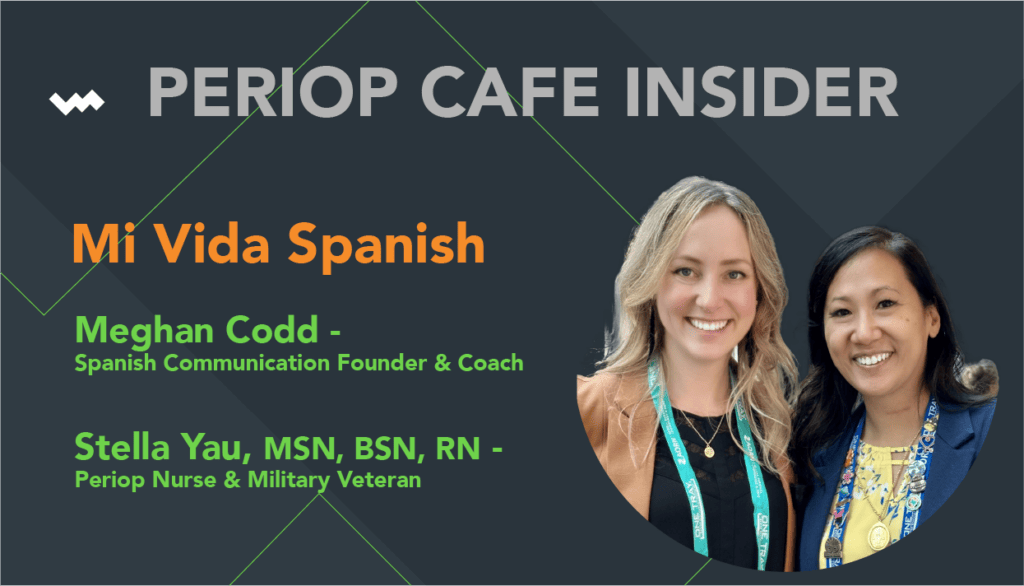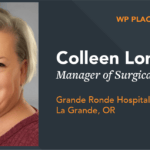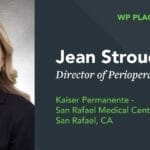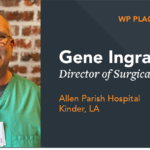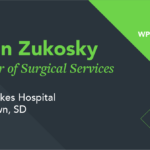Bridging Language Barriers: Mi Vida Spanish Enhances Nurse-Patient Connection in Periop Care
By Carisa Brewster

In the fast-paced world of perioperative nursing, connecting with patients can be a challenge. With limited awake time to interact, nurses have a narrow window to establish trust and calmness. This difficulty intensifies when language barriers arise, particularly in the face of a growing Spanish-speaking population in the United States. While interpreters and bilingual staff offer support, not all healthcare providers speak Spanish. Bridging this gap is crucial, and Meghan Codd steps in with her innovative language coaching service, Mi Vida Spanish, offering a lifeline to healthcare providers for effective communication and compassionate care.
A Rising Demand
Codd has a rich background in language education; her undergraduate and graduate studies were in Spanish and teaching Spanish as a foreign language, and she has 18 years of experience teaching and designing language programs. Raised in a family deeply rooted in the medical field, her late grandfather, a physician, was her first Spanish student.
“He had always wanted to speak Spanish with his Spanish-speaking patients here in Fort Collins, CO, but never had time to learn the language,” says Codd. “By the most conservative estimates, over one-quarter of the U.S. population will be Latinx by 2060. One in three youth will be Lantinx by 2035. That will be reflected in the patient population. In this country—where most of us didn’t necessarily get world language education as part of our professional training—it creates a huge language and cultural barrier.”
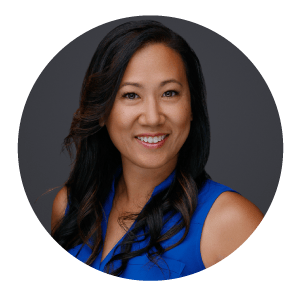
Stella Yau, a perioperative staff nurse who works per diem for Kaiser Permanente-Garfield Ambulatory Surgery Center in San Diego, had so many Spanish-speaking patients that she started looking around for resources on her own. Duolingo and Google Translate were decent but did not quite fit the bill. Yau wanted a more substantial solution. When she started asking around on social media, Codd contacted her via LinkedIn. She started Codd’s coaching program and said it considerably changed her approach to communicating with her Spanish-speaking patients.
“Before, I worried about not sounding perfect enough, not using the right tense,” says Yau. “After having some coaching with
Meghan, I learned that you just need to get past that, and it really transforms the way you connect with your patients. I love it.”
The Unique Communication Needs in Periop
Within the dynamic world of healthcare, the diversity of specialties mirrors the varieties found within the Spanish language. Codd has had conversations with various healthcare professionals across the sector, but her focus gradually sharpened to perioperative services.
“There is a specific need in perioperative for very efficient encounters with patients and their families,” says Codd. “But also, there is a need to connect on a human level with the patient during stressful situations.”
For Yau, the introduction of tablet interpreters to facilitate communication during the pre-op process created a sense of detachment in her interactions with patients. The reliance on technology left her wondering how one can truly connect with a patient when most of the time is spent looking at a screen.
“There are moments in the operating room where you need to tell a patient to move up or down to position them on the OR table and that is not the time to bring in the iPad,” says Yau. “I’m lucky being in San Diego. There is often another staff member who speaks Spanish, but that is not always the case. With [language coaching], I can rely on my own skills. I can better relate to my patients and put them at ease. If their anxiety is decreased by even 2%, it helps.”
Flexible Learning, No Language Pre-reqs
During initial consultations with Codd, a common query arises: How much Spanish must one know to start language coaching? Many people have completed two years of Spanish in high school or college but have seldom used it since. Their vocabulary is limited to simple greetings like “Hola” or “Adios.”
“If you have some Spanish under your belt, that is amazing, but you don’t need to know the language to begin coaching,” says Codd. “All you need is a desire to connect with your patients in their language. That is the most important part. The good thing is that Spanish and English have a lot of similar words and phrases.”
Another important concern Codd hears is how to fit language coaching into the hectic schedule of a perioperative professional. There is considerable flexibility. Codd’s coaching is designed for busy professionals; coaching has a set time to meet live, but when a session is missed, a recording can be accessed at any time. There is also a private coaching group to post questions at one’s convenience and get feedback.
“Going through Meghan’s program helped me realize I was making it harder in my mind than it was, this whole idea of perfection,” says Yau. “I tell people to do something small every day. When we learn a new skill, we don’t learn it all at once. You take a little piece, build on it, and grow. I drive to and from work, and that’s a great opportunity to learn.”
Yau continues to rely on a virtual interpreter or the help of a qualified bilingual staff member for certain aspects of care, like reviewing consent forms. However, she applies what she has learned to enhance interactions during the moments in between, fostering connections with patients.
“Those moments in between can be making small talk while transporting the patient to the OR suite or asking if they are cold and need a blanket,” says Yau. “Establishing a connection and humanizing the patient with my own language skills is as important as getting the required tasks done.”
At AORN’s 2024 Conference and Expo earlier this month, Codd and Yau collaborated to present a session on Spanish communication for perioperative nurses, “Culturally Fluent Care: Nurturing Relationships with Spanish-Speaking Patients.” Members of AORN will have access to select sessions starting April 15.
Meghan Codd is a Spanish communication coach for medical professionals and her mission is to empower medical professionals in the States to confidently speak Spanish in order to provide the best care possible for their patients. In addition to 27 years of speaking Spanish, Meghan has been designing and instructing language learning programs for 18 years, both in the U.S. and abroad. To learn more about Mi Vida Spanish, contact Codd at meghan@mividaspanish.com.
Stella Yau, MSN, BSN, R.N., is a military veteran who works per diem with Kaiser Permanente-Garfield Ambulatory Surgery Center. She is the vice president of AORN San Diego County.
*******
Remember, Whitman Partners is a phone call or email away for your leadership staffing needs. For interim leadership, contact Zach Parker or Ines Radic; for permanent leadership, contact John Elffers.
Looking for a job? Click here to search our job map.
